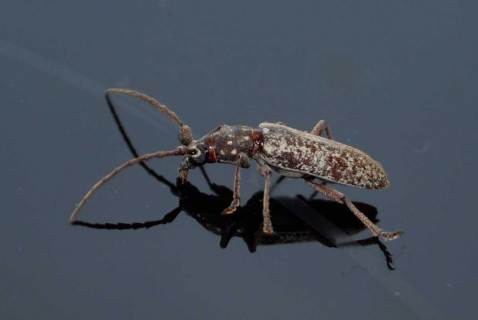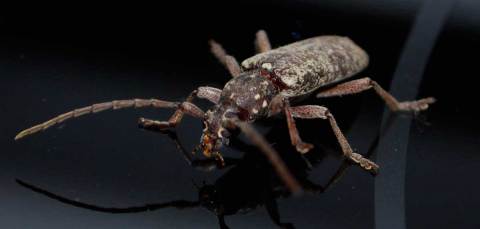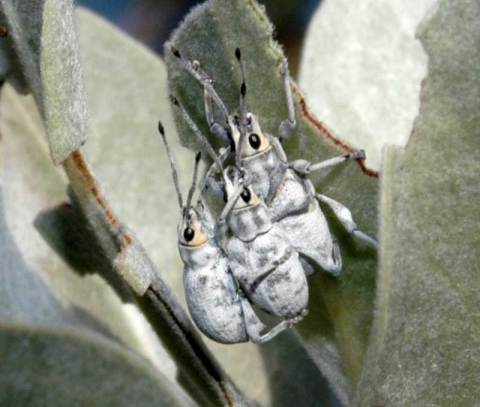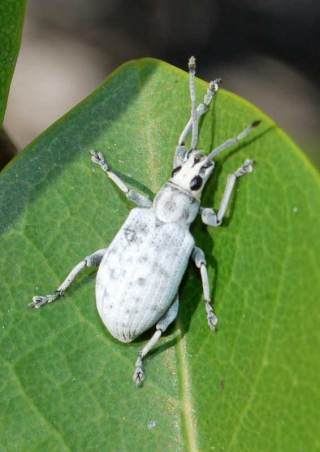Found a couple more bugs over the past few weeks, and once I got around to uploading them to bugguide.net, I was supplied their IDs. They are both plant-eaters, but one eats hardwood trees and is native to Florida, while the other eats almost anything and is imported from south-central Asia (Sri Lanka, India, Pakistan).
The native bug first: it’s a longhorn beetle, member of a very numerous group that has received considerable taxonomic and collector interest. Anelaphus inermis does not, so far as I know, have a common name, but it sure is an interesting little bugger:
Images of pinned specimens seem to indicate that much of the coloration present on this beetle comes from the tiny hairs on its body, although that’s not really evident from the photo above, or from this “head shot” that I managed to make:
A. inermis appears to make its living on our relatively few southern hardwood species, based on this reference:
This common species was reported by Linsley and Chemsak (1997) from many host plants, Carya, Quercus, Citrus, Ichyomethia, Sesbania, and Yucca. Two specimens were reared from black mangrove, Avicennia germinans(L.), collected in June 1998 and emerged April 1999. FL. Monroe Co., Marathon, Boot Key. NEW HOST RECORD.
A single specimen was reared from a fire-killed stem of Bumelia tenax (L.) collected in February 2002 and emerged in May 2002. FL. Polk Co., Lake Marion Creek Road, Magnolia Street. NEW HOST RECORD.
So there you have it.
The second backyard bug I found, the Sri Lanka weevil, Myllocerus undatus Marshall, is not so nice; in fact it’s a bit of an invasive exotic, with specimens taken from enough host plants (68!) all the way back in 2005 that the Florida ag department put out an info sheet about it.
I suppose I should have known it was a bad bugger by how many I saw at once, and by how many scallop-edged and completely-chewed-through leaves of Silver Buttonwood I found. (Conocarpus erectus, a lovely native plant, has been described by Rufino Osorio as “a virtually indestructible tree that has few insect pests”; I suppose it’s time to update that entry!)
Here you can see three of them at once:
I took that picture a couple of days before Christmas and since then (until today), I hadn’t seen any of them. But as I was writing this post, something told me to head out into the yard and see if I could find more of them. Sure enough, one of these little guys was hanging out on my buttonwood’s next-door neighbor, Chrysobalanus icaco (Cocoplum):
After I took this picture, I flicked it as hard and as far as I could with my finger; I probably didn’t damage it too much, and I didn’t see where it landed, but it felt good!
ut now that I know what they are, I might have to resort to “physical control” of them when I see them. While I appreciate the efficiency with which my jumping and crab spiders appear to be tending my Zanthoxylum fagara (despite outbreaks of up to 10 Giant Swallowtail caterpillars on my tiny shrub, I’ve only ever seen one or two late instar caterpillars, and I’ve seen actual predation on them by these spiders), I don’t want to have to rely on that for reduction of the evil weevil population as well.




